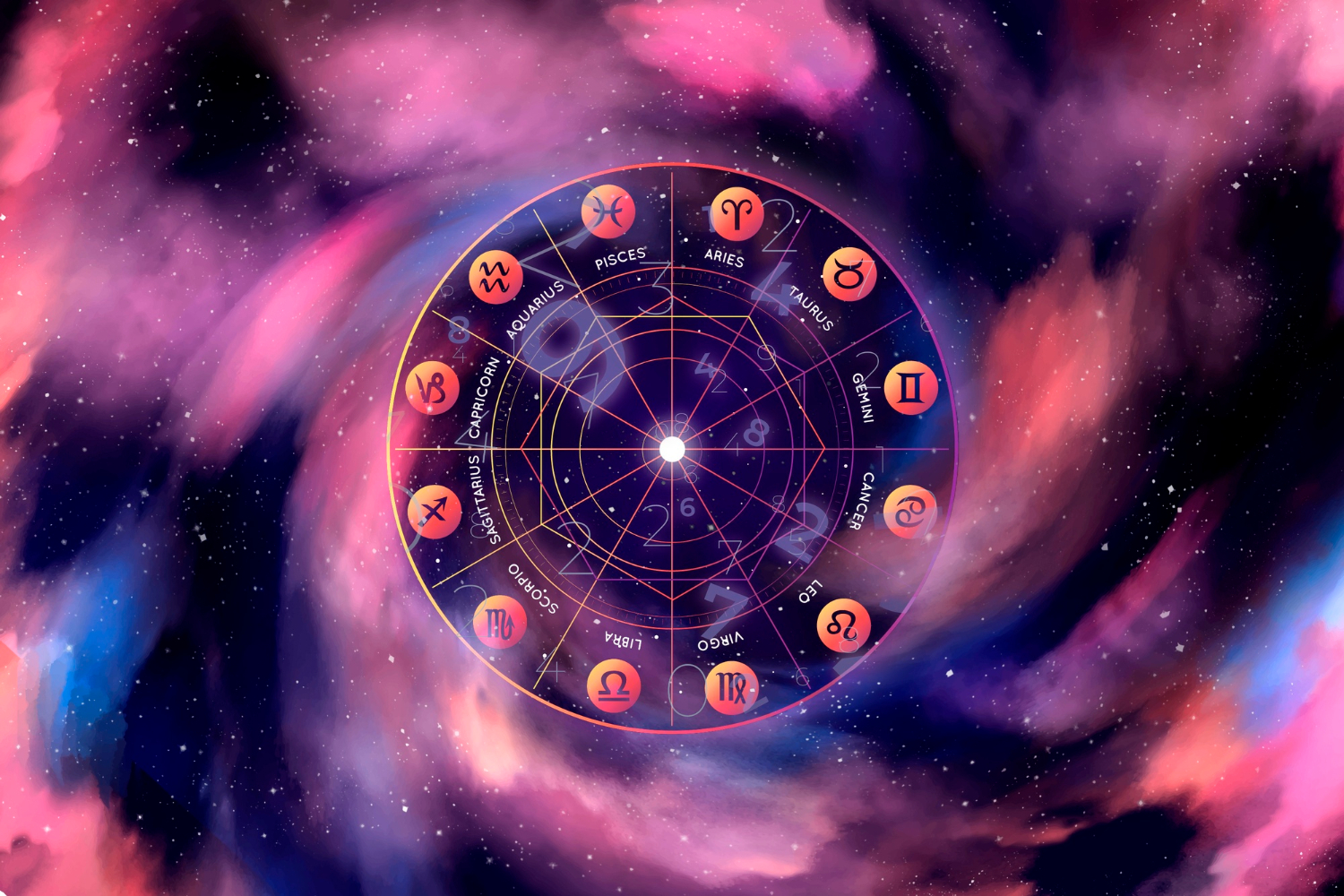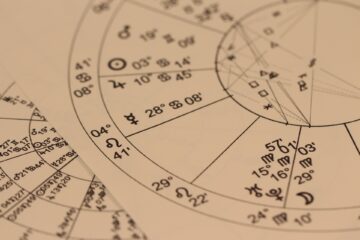Introduction: When Signs Become Mirrors
The twelve zodiac signs in Vedic astrology are not lists to memorize — they are mirrors to recognize.”
“Each sign reveals how energy moves through a person: how they begin, hold, feel, and transform.
Read this like a conversation with your higher observer — not a horoscope, but a map of tendencies. The signs do not define your fate; they describe the tone through which fate speaks.
The Twelve Zodiac Signs in Vedic Astrology and Their Karmic Psychology
Aries — The Spark
Aries is the soul’s first rebellion against hesitation. It acts before thought, moves before permission.
Strengths: courage, initiative, raw vitality.
Shadow: impatience, restlessness, difficulty sustaining the slow climb.
In karmic terms, Aries teaches how to begin without waiting for certainty.
Taurus — The Ground
Taurus values stability, sensuality, and the quiet wealth of consistency.
Strengths: loyalty, endurance, patience.
Shadow: attachment, resistance to change, possessiveness.
The zodiac signs in Vedic astrology remind us that Taurus holds the body — it teaches the soul how to stay.
Gemini — The Messenger
Gemini is the mind learning to dance. It moves between ideas, voices, and worlds.
Strengths: communication, versatility, curiosity.
Shadow: mental scattering, superficiality, argument for stimulation.
Its karma lies in learning depth — to speak truth, not just sound clever.
Cancer — The Memory
Cancer feels everything. It builds safety through care and remembers love long after others forget.
Strengths: empathy, intuition, emotional intelligence.
Shadow: mood swings, defensiveness, attachment to the past.
Cancer teaches that nurturing without losing oneself is the real emotional maturity.
Leo — The Flame
Leo is radiance made visible. It craves expression — not to dominate, but to be recognized as alive.
Strengths: creativity, generosity, leadership.
Shadow: pride, dependence on validation, dramatic stubbornness.
In the twelve zodiac signs meanings, Leo represents the divine need to be seen.
Virgo — The Refinement
Virgo dissects chaos into clarity. It serves not for praise, but to restore order in a disordered world.
Strengths: precision, practicality, discernment.
Shadow: anxiety, over-analysis, perfectionism.
Virgo’s karma is learning that imperfection, too, can be sacred.
Libra — The Balance
Libra listens for symmetry — in people, in aesthetics, in truth.
Strengths: diplomacy, grace, relational intelligence.
Shadow: indecision, avoidance, obsession with external harmony.
Libra’s lesson: peace built on denial is just silence wearing perfume.
Scorpio — The Depth
Scorpio is transformation in disguise. It hides, watches, and burns until it becomes its opposite.
Strengths: intensity, focus, regeneration.
Shadow: jealousy, secrecy, obsession.
In karmic architecture, Scorpio is where the ego dies so the soul can see.
Sagittarius — The Horizon
Sagittarius runs toward meaning. It searches for belief systems that stretch beyond the personal.
Strengths: wisdom, optimism, teaching.
Shadow: carelessness, arrogance of certainty, overpromising.
It is the philosopher who must learn that truth is not found — it is lived.
Capricorn — The Climb
Capricorn builds what time respects.
Strengths: discipline, responsibility, patience.
Shadow: rigidity, fear of failure, emotional suppression.
This sign’s karma is to learn that ambition without awareness becomes imprisonment.
Aquarius — The System
Aquarius sees patterns before others do. It invents, detaches, and often feels alien to its own era.
Strengths: innovation, idealism, collective vision.
Shadow: detachment, eccentricity, intellectual arrogance.
The zodiac signs in Vedic astrology use Aquarius to remind us: revolution is only sacred if it’s humane.
Pisces — The Ocean
Pisces dissolves boundaries. It carries memory, art, and empathy as one continuous field.
Strengths: imagination, compassion, intuition.
Shadow: escapism, confusion, lack of grounding.
Pisces teaches that sensitivity is not weakness — it’s an antenna for truth.
How to Read These Signatures
Never treat one sign as a whole story. Signs are the mood through which planets express themselves.
Mars in Aries fights in daylight; Mars in Scorpio fights in silence. Venus in Taurus loves with touch; Venus in Pisces loves without form.
When learning, start by sensing the texture of each sign in people you know. Then study how planets and houses modify that base frequency.
Next Steps in Understanding Your Chart
Once you internalize the twelve zodiac signs in Vedic astrology, move to deeper layers:
- Planetary friendships and enmities
- Exaltation and debilitation
- Divisional charts (Navamsa, Dashamsha)
These reveal when an energetic sign becomes destructive or constructive — when your own pattern helps or sabotages you.
Important Notes from Vedic Logic
Does Jupiter “destroy” the house it occupies and Saturn “increase” it?
Not destroy — transform. Jupiter expands comfort; Saturn expands endurance. Jupiter’s expansion can make you indulgent; Saturn’s weight can make you wise. The outcome depends on planetary dignity, aspects, and chart context.
If Jupiter and Saturn are together in a kendra, is it good?
It’s karmically serious. The blend of faith (Jupiter) and effort (Saturn) brings lifelong building energy. But benefic/malefic status varies by ascendant. Always analyze dignity and combustion before judgment.
Does combustion make a planet useless?
No planet is ever useless. Combustion internalizes a planet’s power — turning it from external action to inner refinement. Effects differ by birth time, divisional strength, and nakshatra position.
Is a vargottama and retrograde Saturn in Scorpio good for Leo ascendant?
It can be — but only if supported by benefics. Retrograde gives inner potency; vargottama strengthens authenticity. Yet Saturn in Scorpio can test physical endurance. Judgment demands full chart context.
Can Jupiter and Saturn both be benefics for one ascendant?
Rarely. Their functional roles differ by sign. Analyze house rulerships before labeling either as wholly benefic or malefic. In most charts, one supports structure while the other challenges it — both are necessary.
FAQ
How do I know which part of a sign shows up most in someone?
Start with the Ascendant sign (outer behavior), then Moon sign (emotional pattern), and Sun sign (identity drive). Watch which planets occupy or rule that sign — benefics soften, malefics sharpen.
Do “male” and “female” signs reflect gender?
No. They describe energy expression — active versus receptive. Use them to understand rhythm, not identity.
If a planet is strong in its sign, is that always good?
Not necessarily. Strength means capacity, not virtue. A powerful Mars can create a soldier or a tyrant depending on awareness and house rulership.
How should I use sign descriptions while learning chart reading?
Treat signs as the first intuitive layer. Memorize core words — then observe real people. Experience will teach more than theory.
What if one planet rules two opposite signs — like Mars ruling Aries and Scorpio?
See them as two expressions of the same essence. Aries acts. Scorpio strategizes. The planet’s theme stays — the tone changes.
Conclusion: Astrology as Self-Observation
Understanding the twelve zodiac signs in Vedic astrology isn’t about predicting behavior — it’s about recognizing frequency. Each sign is an ancient code of energy — one you’re here to translate through your choices.
Astrology doesn’t tell you who you are. It tells you what you’re made of. The rest is how you use it.
Ask your karma. Decode your chart at Much Needed Astro.



